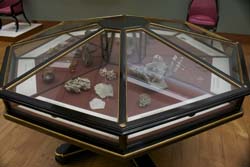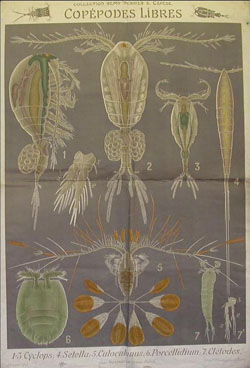Object Lessons: The evolution of museum objects and how we relate to them
 Object Lessons is a podcast series about museum objects and our relationships to them. The Hunterian houses countless objects and artefacts that began their life at the institution as teaching materials. They used to be handled, passed around and closely scrutinised – maybe even poked and prodded. But now these objects often exist behind glass, which both physically and conceptually frames them in ways that often reflect only one aspect of their previous functions and former lives.
Object Lessons is a podcast series about museum objects and our relationships to them. The Hunterian houses countless objects and artefacts that began their life at the institution as teaching materials. They used to be handled, passed around and closely scrutinised – maybe even poked and prodded. But now these objects often exist behind glass, which both physically and conceptually frames them in ways that often reflect only one aspect of their previous functions and former lives.
Object Lessons plays with these ideas. This interactive project looks at the history of The Hunterian’s collections, and considers how collecting and display practices have shifted. It looks at how objects have changed from being teaching materials to museum pieces, while also questioning what defines these categories.
 The podcast series will look at a handful of items currently on display within The Hunterian. In each short episode an object will be paired with an unconventional interpreter – an anatomical teaching chart as seen through the eyes of a graphic designer for instance. The series creates a dialogue between these objects’ dynamic and layered histories, and contemporary research and creative practices.
The podcast series will look at a handful of items currently on display within The Hunterian. In each short episode an object will be paired with an unconventional interpreter – an anatomical teaching chart as seen through the eyes of a graphic designer for instance. The series creates a dialogue between these objects’ dynamic and layered histories, and contemporary research and creative practices.
Find out more:
Object Lessons project hub: listen to podcasts, explore the featured objects and find out more about the contributors. The site will be updated regularly with new content, so check back to follow the project.
Rosie Spooner, 2nd year Ph.D. candidate in the History of Art / HATII.
Ph.D. Research: "Close Encounters: International Exhibitions and the Material Culture of the British Empire, 1900 - 1970"
Looking at the material culture of colonial encounters, Rosie is examining the movement of objects, people and ideas between England, Scotland and Canada through the mechanisms of the International Exhibition, exploring how these events functioned as sites where varied colonial, national and imperial identities were performed. Her developing curatorial practice brings together historic and contemporary objects, artworks and exhibitionary models in an effort to re-frame these categories, issues which similarly underpin her academic research.

